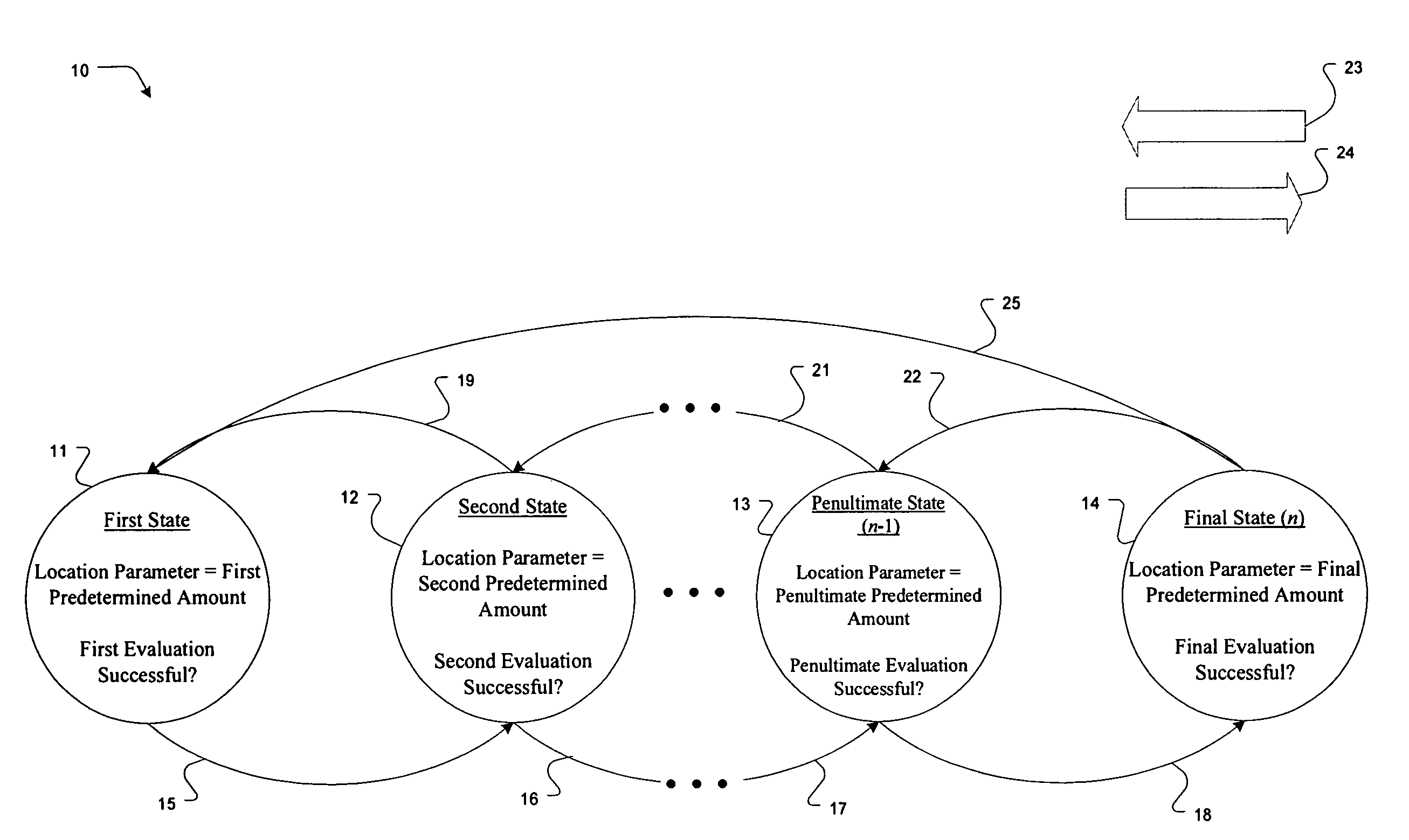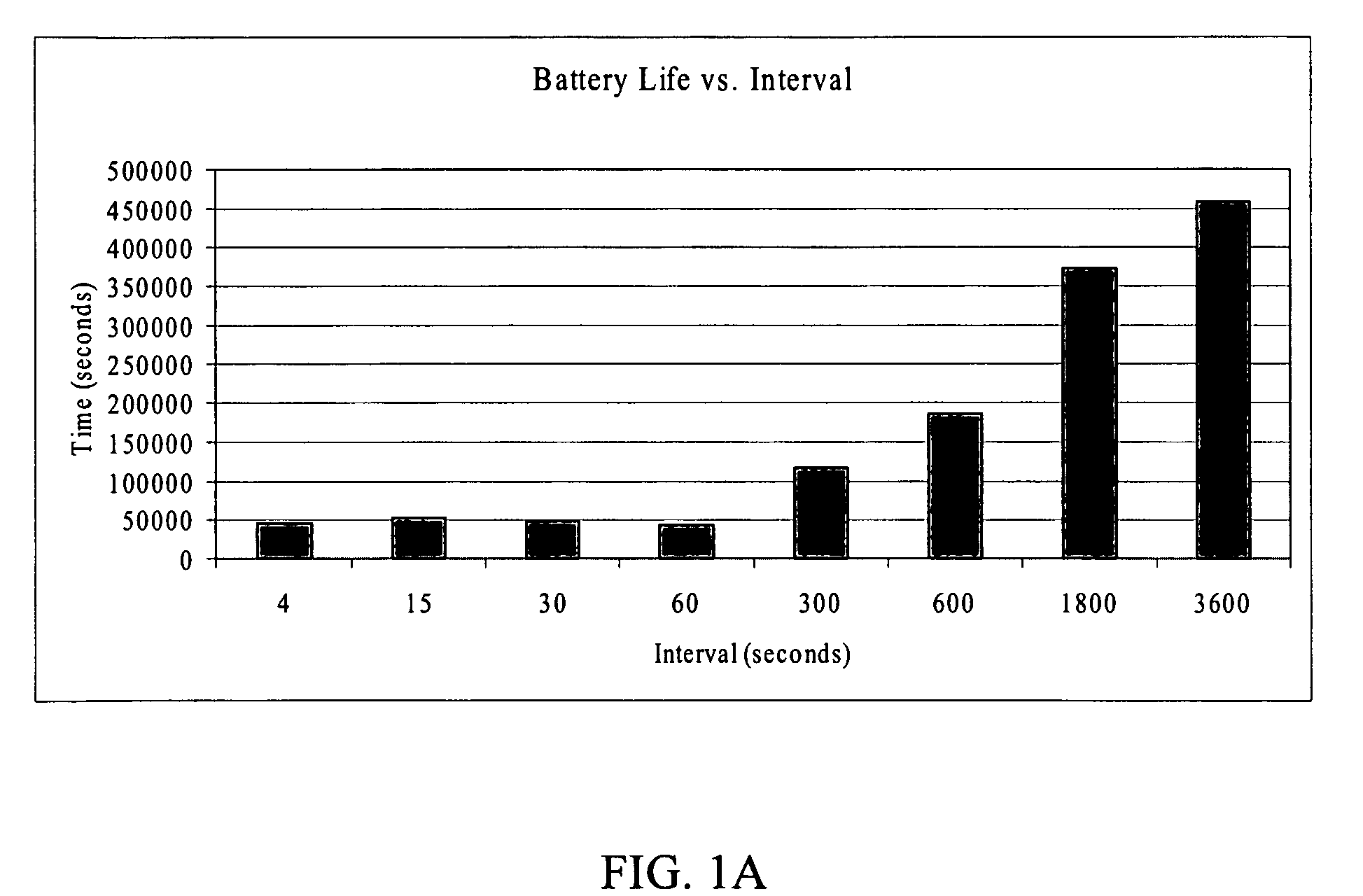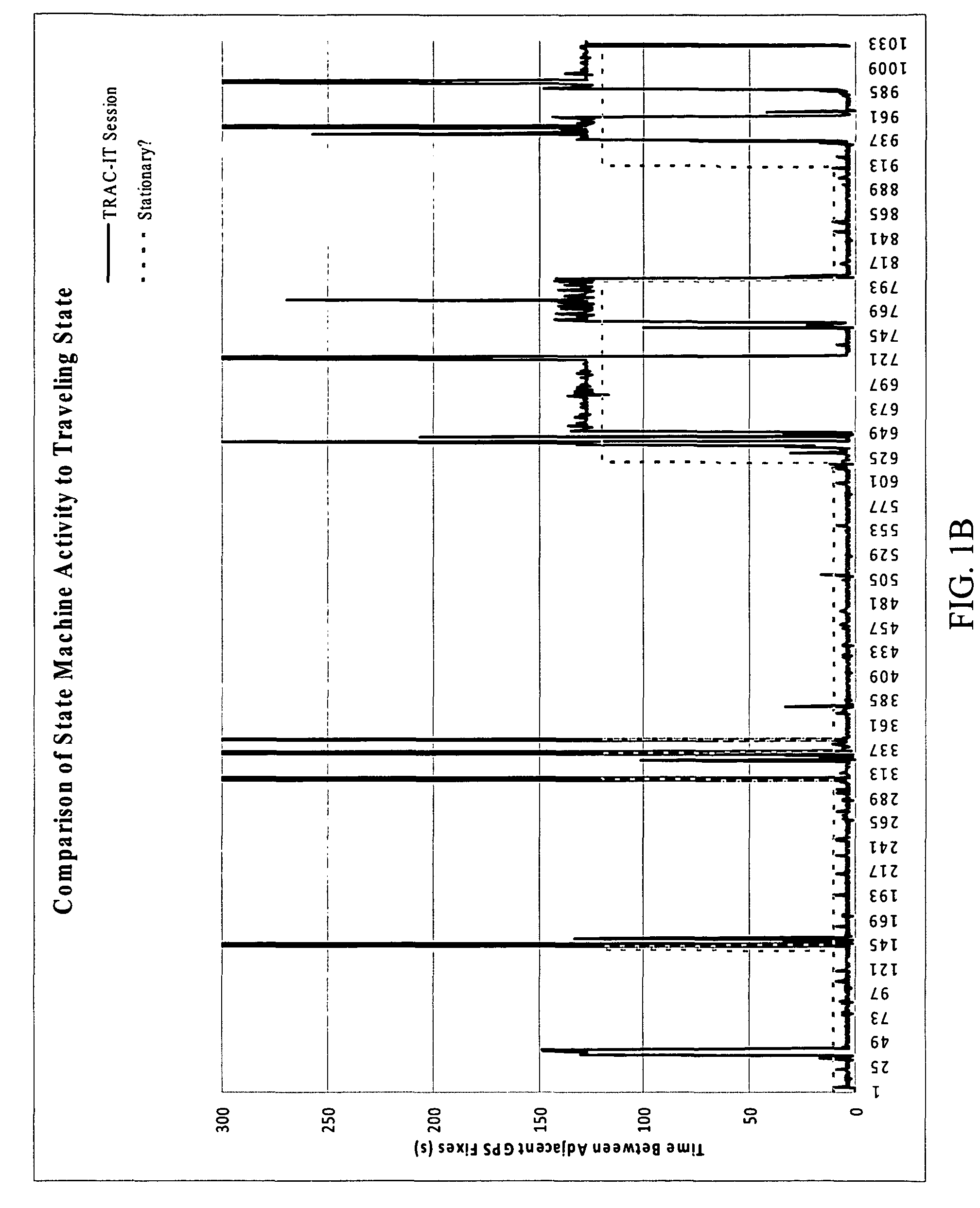Optimizing performance of location-aware applications using state machines
a technology of location-aware applications and state machines, applied in special services, instruments, high-level techniques, etc., can solve the problem of large amount of energy consumption, and achieve the effect of reducing the number of location calculation attempts and consuming a considerable amount of energy
- Summary
- Abstract
- Description
- Claims
- Application Information
AI Technical Summary
Benefits of technology
Problems solved by technology
Method used
Image
Examples
example 1
Generalized Single State Machine
[0052]As shown in FIG. 2, the location-aware method is illustrated using state machine 10. State machine 10 comprises a plurality of states, or n states. FIG. 2 shows first state 11, second state 12, penultimate (n−1) state 13, and final (n) state 14. The location-aware method is called every time the calling LBS application successfully calculates a new location. The method then determines if state machine 10 should change states. Once the state changes, the location-aware method modifies various software and / or hardware settings based on the properties defined in the new state.
[0053]To illustrate, the method begins in first state 11, where a location parameter is set to a first predetermined amount. Next, the method evaluates whether state machine 10 should move to the next state, second state 12, or remain in first state 11. If the evaluation fails, then the method moves, in jump 15, to second state 12, and the location parameter is changed to a se...
example 2
Changing States Based on Success or Failure of Location Calculation Attempts Using a Single State Machine
[0057]State changes may occur based on whether location calculation attempts succeed or fail. If a location calculation was not successful, the state is changed from a state X to a state X+1. Certain application properties, such as the time interval at which the location of the device is recalculated, can then be adjusted based on information contained in the new (X+1) state.
[0058]As illustrated in FIG. 3, the method begins in first state 11, where the location recalculation interval is set to a first predetermined amount, which is illustrated here as four seconds. If the next location calculation succeeds, then the method remains in first state 11 and the location recalculation interval remains set to the first predetermined amount (or four seconds). However, if the calculation fails, then the method moves, in jump 15, to second state 12, and the location recalculation interval ...
example 3
Changing States Based on the Distance Between the Two Most Recent Calculated Location Points Using a Single State Machine
[0063]State changes may also occur based on the distance between the two most recent points calculated. State machine 10 moves forward a state (from state X to state X+1) upon a failed distance evaluation. A distance evaluation fails when the distance between the two most recent calculated locations is less than a predetermined threshold (for example, one meter). Certain application properties, such as the time interval at which the location of the device is recalculated, can then be adjusted based on information contained in the new (X+1) state. State machine 10 moves back a state (from state X+1 to state X) upon a successful distance evaluation. A distance evaluation is successful when the distance between the two most recent calculated locations is greater than the predetermined threshold. Application properties can then be adjusted based on information contain...
PUM
 Login to View More
Login to View More Abstract
Description
Claims
Application Information
 Login to View More
Login to View More - R&D
- Intellectual Property
- Life Sciences
- Materials
- Tech Scout
- Unparalleled Data Quality
- Higher Quality Content
- 60% Fewer Hallucinations
Browse by: Latest US Patents, China's latest patents, Technical Efficacy Thesaurus, Application Domain, Technology Topic, Popular Technical Reports.
© 2025 PatSnap. All rights reserved.Legal|Privacy policy|Modern Slavery Act Transparency Statement|Sitemap|About US| Contact US: help@patsnap.com



